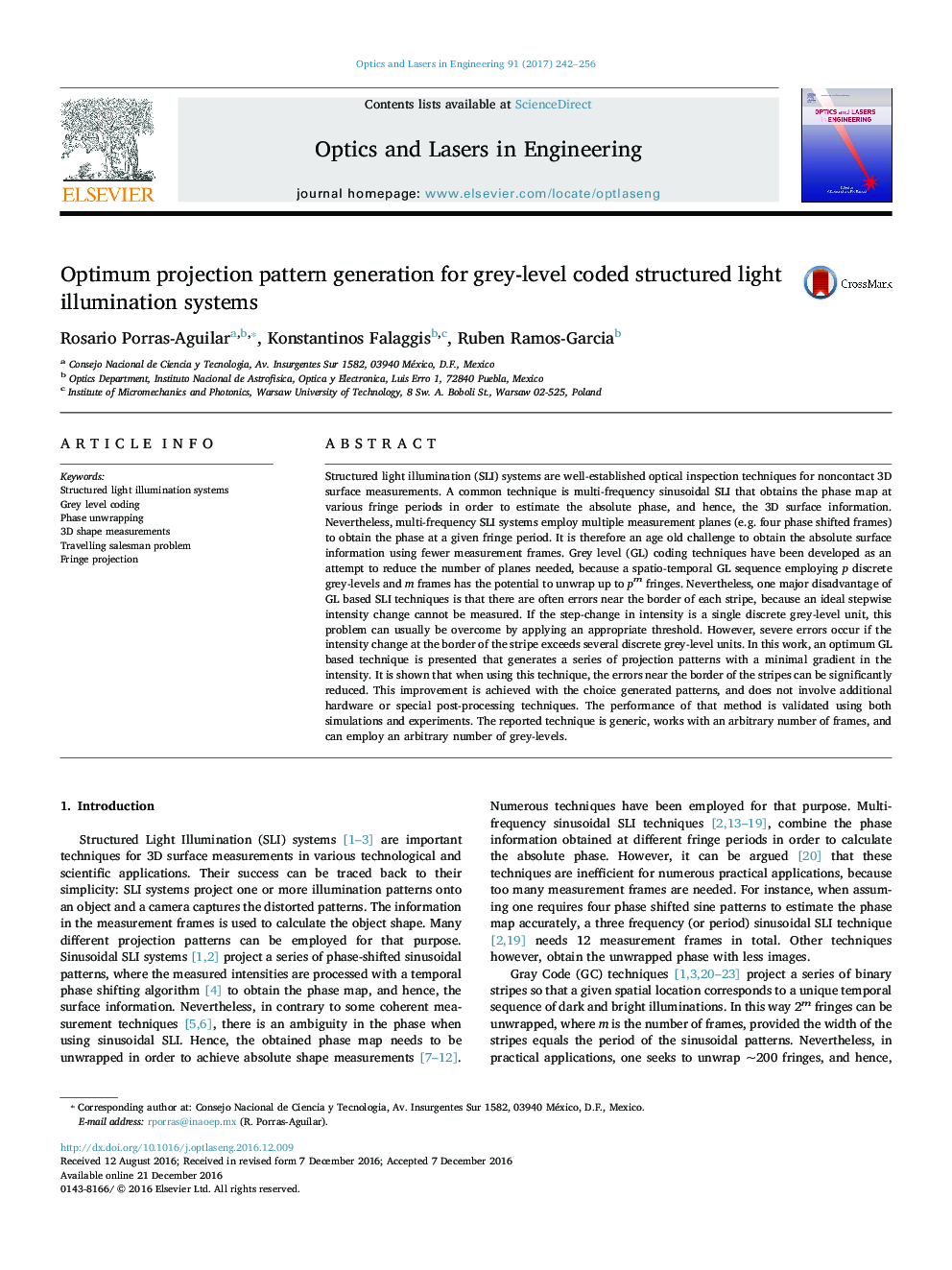| Article ID | Journal | Published Year | Pages | File Type |
|---|---|---|---|---|
| 5007890 | Optics and Lasers in Engineering | 2017 | 15 Pages |
â¢Generation of projection patterns with a minimal intensity gradients.â¢This technique can be employed with an arbitrary number of frames and grey-levels.â¢The problem of "minimizing the intensity gradients" is transferred to "finding the shortest route through code-space".â¢The equivalent problem is solved using a “Travelling Salesman Problem” solver.â¢Technique improves Color-coding techniques by optimizing the 3D color-space.â¢Less measurement planes are required than sinusoidal SLI without losing accuracy.
Structured light illumination (SLI) systems are well-established optical inspection techniques for noncontact 3D surface measurements. A common technique is multi-frequency sinusoidal SLI that obtains the phase map at various fringe periods in order to estimate the absolute phase, and hence, the 3D surface information. Nevertheless, multi-frequency SLI systems employ multiple measurement planes (e.g. four phase shifted frames) to obtain the phase at a given fringe period. It is therefore an age old challenge to obtain the absolute surface information using fewer measurement frames. Grey level (GL) coding techniques have been developed as an attempt to reduce the number of planes needed, because a spatio-temporal GL sequence employing p discrete grey-levels and m frames has the potential to unwrap up to pm fringes. Nevertheless, one major disadvantage of GL based SLI techniques is that there are often errors near the border of each stripe, because an ideal stepwise intensity change cannot be measured. If the step-change in intensity is a single discrete grey-level unit, this problem can usually be overcome by applying an appropriate threshold. However, severe errors occur if the intensity change at the border of the stripe exceeds several discrete grey-level units. In this work, an optimum GL based technique is presented that generates a series of projection patterns with a minimal gradient in the intensity. It is shown that when using this technique, the errors near the border of the stripes can be significantly reduced. This improvement is achieved with the choice generated patterns, and does not involve additional hardware or special post-processing techniques. The performance of that method is validated using both simulations and experiments. The reported technique is generic, works with an arbitrary number of frames, and can employ an arbitrary number of grey-levels.
